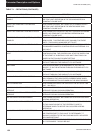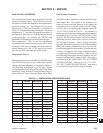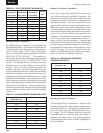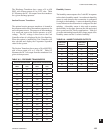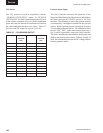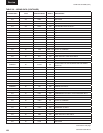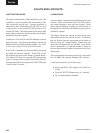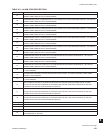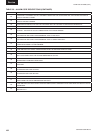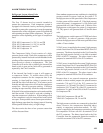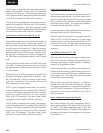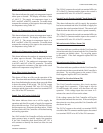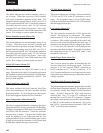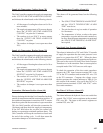
160
JOHNSON CONTROLS
FORM 100.50-NOM6 (1207)
Service
LIGHT EMITTING DIODE
The light emitting diode (LED) installed on the Unit
Controller is used to indicate the functionality of the
Unit Controller and the unit. Normal operation is
indicated by the LED fl ashing ON and OFF at a rate
of one-second. A one-second ON followed by a one-
second OFF fl ash. This means there are no active fl ash
codes, faults or clock-outs. However there may be faults
recorded in the history buffer.
A fl ash rate of 250 ms ON and OFF indicates a current
alarm is present. The alarm code number will also be
fl ashing on the four-digit character display. See Table
8-9 for a description of each of the alarm codes.
If the LED is constantly on (does not fl ash), the board
has failed and must be replaced. If the LED is OFF
this indicates no power to the board or a board failure.
Two fl ashes ON, then two-seconds OFF indicates the
control is timing out on an Anti-Cycle-Delay (ASCD).
To bypass the ASCD timer depress the TEST/UP button
3 times within 5 seconds.
FAULTS AND LOCKOUTS
ALARM CODES
An active alarm is represented by a fl ashing alarm code
numeral. There are 43 alarms in all. Not all the alarms
are critical enough to shut down the system. Some
alarms fl ag the problem to bring it to the attention of
the operator or technician while allowing the system to
continue to operate.
The display fl ashes the current or most recent code
and contains the last fi ve failures as well. To recall the
last fi ve failures from the most recent to the oldest of
the fi ve, press the “Alarm/Change” button once and
each code is displayed for two seconds. Each failure
code is numbered 1 to 5 and the number is shown in
the two-digit character display located above the four-
digit display.
The current and last fi ve alarms can also be views under
the “ALARM” tab using the Simplicity PC software.
A unit lockout can be reset in three ways:
• Removing the 24 VAC supply to the Unit Con-
troller.
• Press the TEST/UP button twice in 5 seconds.
• By a communicated command.



